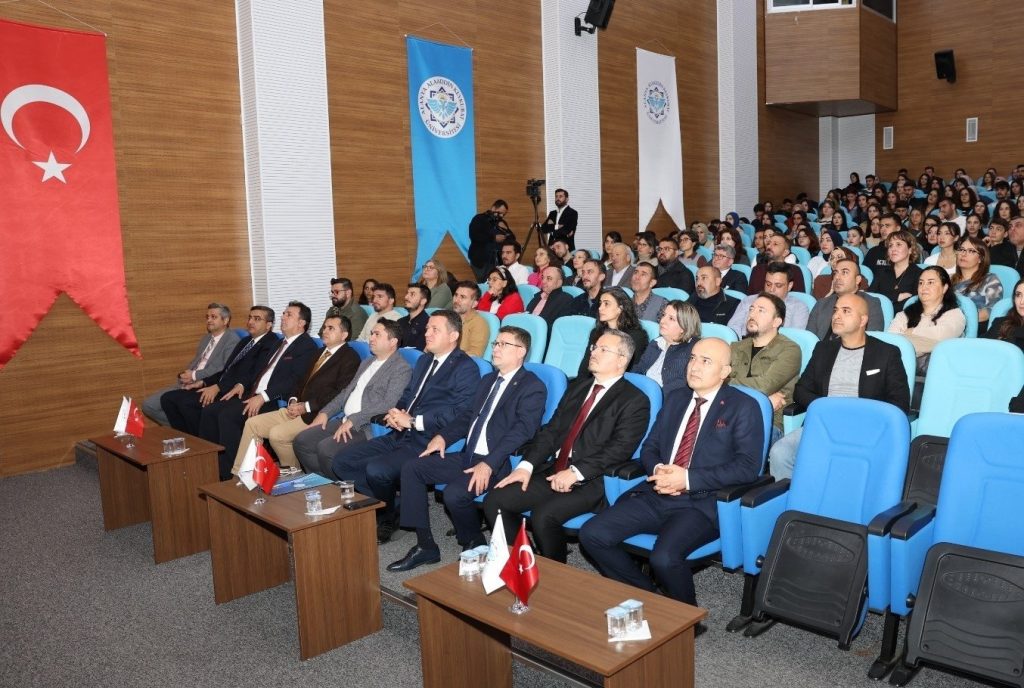All 29 letters used in Türkiye’s alphabet are present in the alphabets of all Turkic-speaking countries, Turkish Language Association (TDK) President Osman Mert stated, emphasizing that, “In Türkiye, we will continue using 29 letters, and other Turkic republics will vary by one to three letters, and that’s all.”
A conference titled “Turkish Language Association and Common Alphabet in the Turkic World” was organized by the Alanya District Governorship and Alanya Alaaddin Keykubat University (ALKÜ) at the Faculty of Education’s Başöğretmen Atatürk Conference Hall.
During his speech, Mert explained that until the 20th century, alphabet changes around the world were driven by religious and religious needs. However, in the 20th century, needs changed, especially with the Industrial Revolution.
“With the Industrial Revolution, needs evolved. International relations and information exchange came into play. The majority of the Turkic world switched to the Latin alphabet in the 20th century. Türkiye switched to the Latin alphabet in 1928 thanks to Mustafa Kemal Atatürk, which brought alphabet unity to the Turkic world. However, later, Stalin’s Russia forced many Turkic countries to adopt the Cyrillic alphabet, breaking that unity.”
Mert emphasized that achieving cultural unity starts with unity in writing and stated that without this, unity in other areas cannot be achieved.
In 1991, academics from Turkic republics determined the 34-letter Turkic alphabet, which was revisited by these countries in 2022.
Mert further explained that the 34-letter Turkic World Common Alphabet is often misunderstood and clarified. “If we remove or add a letter to our alphabet now, it would cause chaos. Is there a need for this? No. So where did these five letters come from? For instance, there are sounds in our dialects that distinguish meaning but are not in standard Turkish. What will we do? We will mark them. The greatest success here is that all 29 letters of Türkiye’s alphabet are used in all Turkic republics. The rest are symbols for phonemes unique to them but not found in Türkiye.”
He continued: “The 34-letter alphabet is a framework alphabet, not specific to any one country. The number of letters used in the Turkish of Türkiye, Azerbaijan, Kazakhstan, Kyrgyzstan and Uzbekistan is 34, but this is not the alphabet of a single country. Türkiye and Azerbaijan will continue using the same alphabet without needing to add or subtract anything. But today, Kyrgyzstan and Kazakhstan still use the Cyrillic alphabet, which will eventually change. Uzbekistan currently uses two alphabets.”
Mert also pointed out that the common alphabet would positively impact education, tourism and science, bringing cultures, people and states closer together. “This will, in the long term, enhance our ability to act in unison,” he said.
He further emphasized that at least 70% of the world’s information is currently produced using the Latin alphabet. “We live in a world where the Western bloc sets the standards, and this has become the global norm.”


